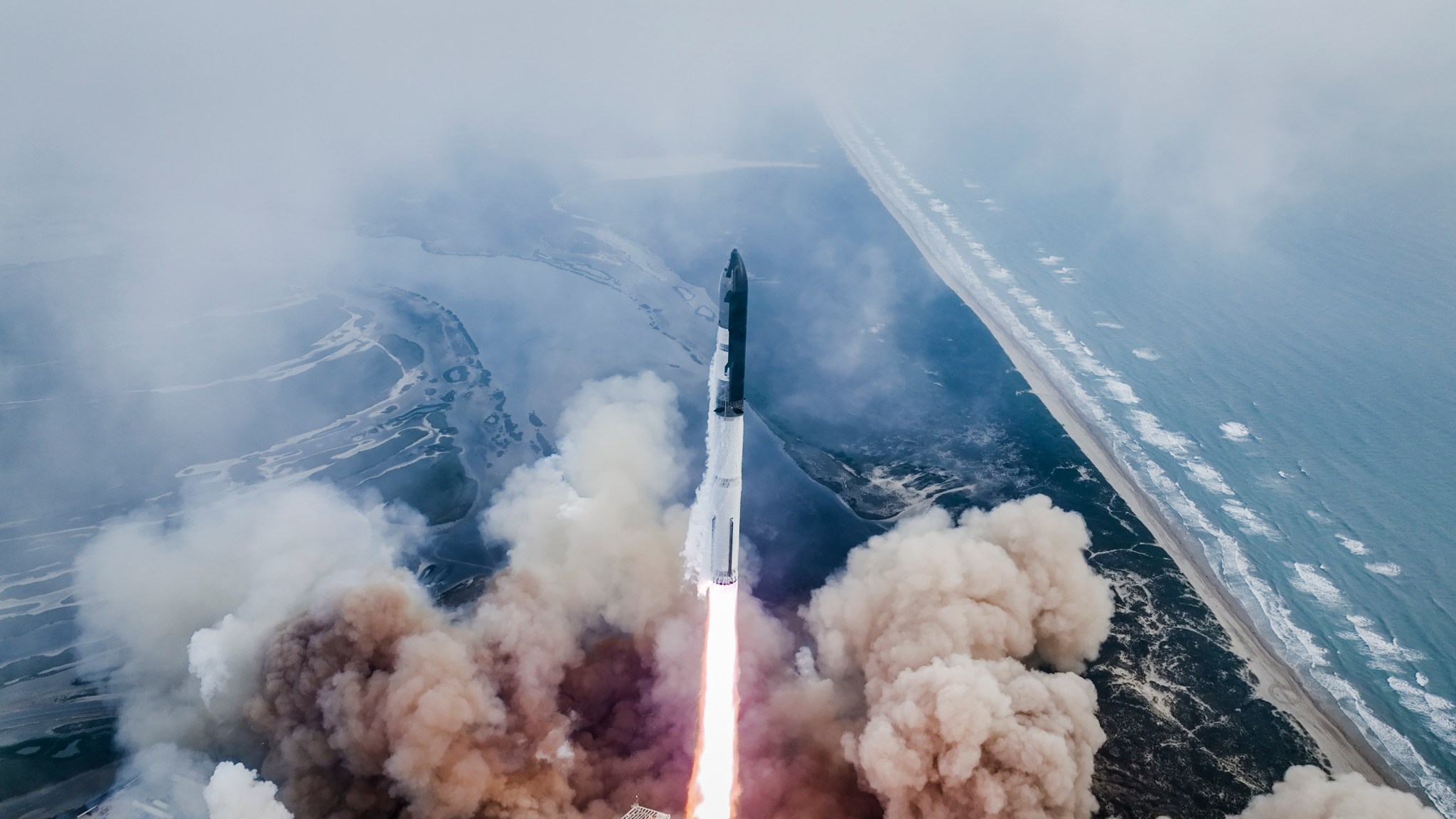
As part of NASA's Artemis campaign to return humans to the Moon for the benefit of all, the agency is working with SpaceX to develop the company's Starship human landing system (HLS), which will land astronauts near the Moon's South Pole during the Artemis III and Artemis IV missions. On March 14, SpaceX launched the third integrated flight test of its Super Heavy booster and Starship upper stage, an important milestone toward providing NASA with a Starship HLS for its Artemis missions.
A complement of 33 Raptor engines, fueled by super-cooled liquid methane and liquid oxygen, powered the Super Heavy booster with Starship stacked on top, from the company's Starbase orbital launch pad at 8:25 a.m. CDT. Starship, using six Raptor engines, separated from the Super Heavy booster employing a hot-staging technique to fire the engines before separation at approximately three minutes into the flight, in accordance with the flight plan. This was the third flight test of the integrated Super Heavy-Starship system.
"With each flight test, SpaceX attempts increasingly ambitious objectives for Starship to learn as much as possible for future mission systems development. The ability to test key systems and processes in flight scenarios like these integrated tests allows both NASA and SpaceX to gather crucial data needed for the continued development of Starship HLS," said Lisa Watson-Morgan, HLS Program Manager at NASA's Marshall Space Flight Center in Huntsville, Alabama.
This test accomplished several important firsts that will contribute to the development of Starship for Artemis lunar landing missions. The spacecraft reached its expected orbit and Starship completed the full-duration ascent burn.
One objective closely tied to future Artemis operations is the transfer of thousands of pounds of cryogenic propellant between internal tanks during the spacecraft's coast phase as part of NASA's Space Technology Missions Directorate 2020 Tipping Point awards. The propellant transfer demonstration operations were completed, and the NASA-SpaceX team is currently reviewing the flight data that was received. This Tipping Point technology demonstration is one of more than 20 development activities NASA is undertaking to solve the challenges of using cryogenic fluids during future missions.






